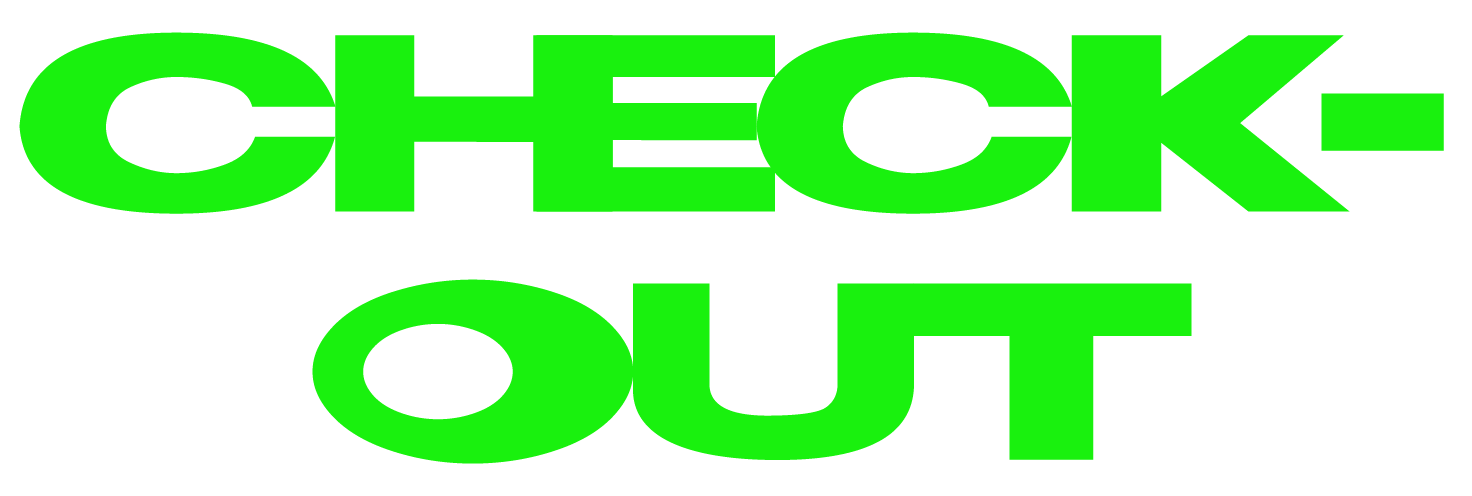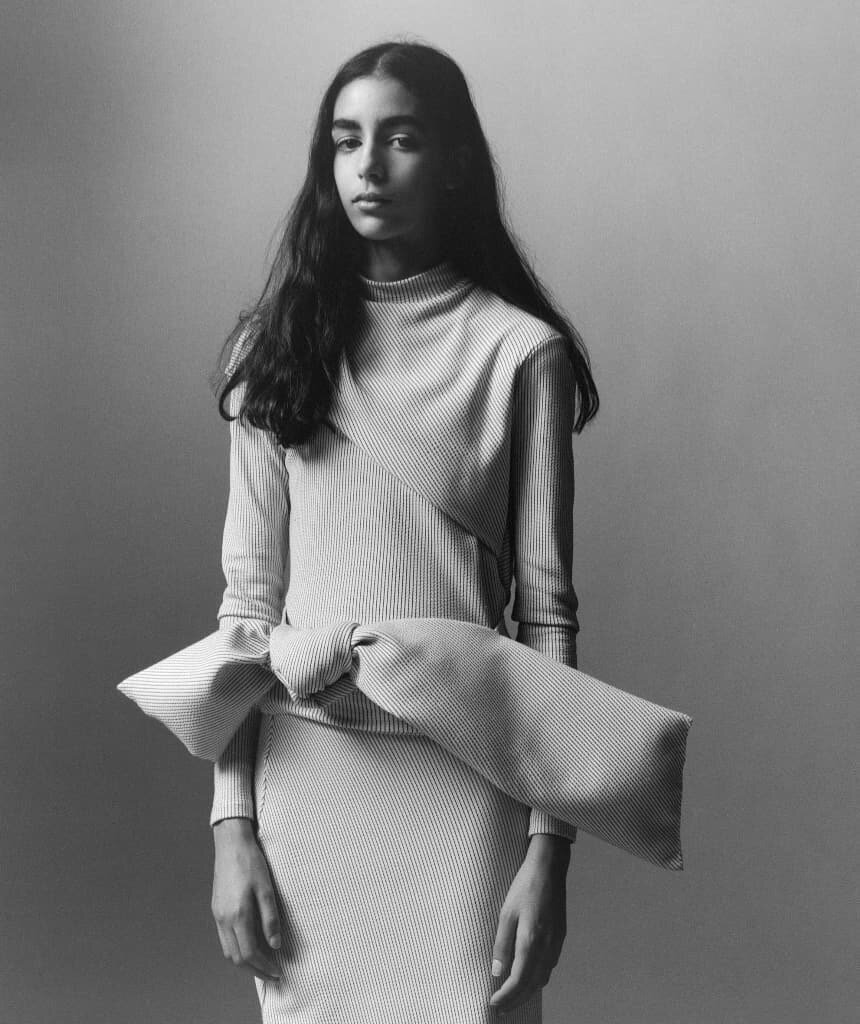Fashion Photographer Jamie Hawkesworth on capturing the sublime moments of everyday life
It’s often said that curiosity killed the cat, but for photographer JAMIE HAWKESWORTH, it’s what keeps him going. “You have to be curious and appreciate the unexpected moments,” reflects the esteemed photographer whose portfolio spans the hallmark titles including Vogue to campaigns for JW ANDERSON, PRADA and LOEWE.
Hawkesworth is more than just a talented photographer delicately capturing arresting moments of human empathy, between bodies and landscapes. The documentary style of his work holds greater substance for a younger generation who are conditioned into thinking that careers need to be established in school. What school doesn’t teach us is what happens when you don’t know what to do? “I had absolutely no interest in photography when I was growing up,” he shares with an ironic laugh. “I could never really understand them and get my head around anything creative.” But curiosity and a bold lead from photographing forensic evidence, to photographing models has earned Hawkesworth the title early on in his career as one to watch.
In the midst of summer, in between unstable weather and the feeling of boosted morale as England somehow tiptoed their way into the Euros, Jamie Hawkesworth – jumping between studio and the cafe opposite his darkroom to watch the football – takes a pause from sorting his archive of photos to contemplate how the Suffolk-raised boy came to be one of the most prestigious British photographers of today. His work communicates emotional depth and rawness, showcasing the spectacle of our quotidian lives. It’s not about bells and whistles but about the simple beauty of the pre-existing stage that we build our humble lives on.
Scarlett Baker: Jamie, it’s a pleasure to chat with you and catch you with your busy schedule. I want to kick things off by talking about your impromptu entrance into photography. Where did it all begin?
Jamie Hawkesworth: I remember at school, I used to think two subjects that were really pointless for me were French lessons and art lessons, which is absolutely ridiculous and in hindsight I must have been a madman. I was in special needs in high school. I struggled with maths, english, science. I actually changed college, I’m not too sure why. I guess I just thought bloody hell, I needed to sort myself out here and that’s when I started to study biology and psychology and went on to do forensic science at Preston Uni. I really got into biology because at that level, it’s all about memorising facts so with hard work, I got myself through it. The course was carved into two halves, one side was really practical and the other very law heavy, which I didn’t like. For the practical side, we had these mock crime scene houses where we would collect evidence and use cameras in a really simple, objective way to document evidence. That was really the first time I thought wow, photography.
SB: So was that your first time really picking up a camera?
JH: Yeah. It made me realise what you can do with a camera. I was 18 then, and did a year of that but failed the law side so I thought shit, what am i going to do? So on a bit of whim, I decided to switch to photography and within a week, I pretty much fell in love with everything about it.
SB: How did you feel coming into the photography world without much experience? I Imagine it was quite daunting?
JH: I actually think it was a blessing because it just made me excited by everything and I would just do it 24/7 to get my head around it and catch up with how to use a camera. That’s when I started to photograph people because they are always around. All I’d need to do is leave the flat and there’d be someone to photograph.
SB: What made you take the leap into fashion photography then?
JH: It actually started through assisting. I really wanted to work with documentary photographers but no one really needed an assistant. So my tutor at the time suggested that I should try contacting fashion photographers because they always need support. I started travelling down to London from Preston for anyone who would take me. There was a photographer called NIK HARTLEY who, at the time, was just starting out. He was doing small editorials for Wonderland Magazine and that was the gateway really.
SB: Was the fashion industry on your radar when you were younger?
JH: Oh god, no. Fashion was even further away from art! I just wouldn’t know what it was. For me it would mean going to Burton or Topman or getting a shirt to go to a club.
SB: Growing up in Suffolk, were you inspired by your surroundings and raised in a creative background at all, or was it something you’ve really pursued independently?
JH: I guess not in the classical sense. My Dad would take me for walks and take family photographs like most parents, which really pissed me off at the time. It really did just come out of nowhere. I think it was more the fact that I had little inspiration with regard to anything creative when I was growing up. But once I started studying photography, all of those things like looking at a painting really became appealing to me and I think because I didn't appreciate it growing up, it was like this sort of overload. I had a fire in my belly and realised I loved what I was doing and wanted to give it my all. I was hounding people with messages. Back then, everyone had their mobile numbers on their websites so I used to call everybody which was quite daunting ringing up these people and telling them I’m studying photography and want to work for them for free.
SB: Did you move down to London when things started to pick up?
JH: I was still at uni in Preston at the time and had a job at Subway on Monday’s and Friday’s so I’d use the money from that to get the train down at the weekend and come back that night. I did that for two years and then I moved to London in 2009. I was building my network there.
SB: One of the incredible things about your work is your process in the darkroom, printing your own images. Is that somewhere where you feel at home?
JH: I spent a lot of my time last year in the darkroom and before the first lockdown, I’d started to bring together portraiture from 13 years of the British Isles. I would go into the darkroom every single day just printing those because I had hundreds and hundreds of portraits. It was gonna take me about a year to print them anyway. It costs so much money to print your photographs, so to begin with, it was a logistical reason as I couldn’t afford to print my own pictures. I started to get my head around colour and how I feel above creating a warm or a colder photographer. The darkroom is a real blanket of security, and it’s immensely simple.
SB: I’ve never really picked up a camera other than my phone and the thought of taking someone’s photo in the street seems quite daunting. What’s it like?
JH: I love the fact that I can just walk outside and be in the now and just observe people. It’s incredibly exciting. And obviously when you're at the mercy of chance like that, you never quite know what's going to happen. It's also just being present. If you can just go on a bus and go somewhere and take a portrait or take a picture of a puddle or bench, that’s incredible.
SB: Let’s talk a little bit about The British Isles, the photo book that you brought out this year, documenting the photos you’ve taken from 2007-2020.
JH: When I was assisting, I’d try to make sure I had time to take my own photographs. So every weekend I would pick a place in the UK that I haven’t been. I’d get on a train with my camera, see a new place that I didn’t know and just start taking photos. I’ve done that now for as long as I can remember. It’s been fascinating to look at the archive of photographs I’ve taken and one that I took 10 years ago and never would’ve printed at the time because it didn’t resonate with me and now it does, you really witness how time changes a photograph.
SB: Is there a difference in how you work when you're taking your own personal photographs compared to when you’re on a job for a fashion editorial?
JH: There was a period where it's funny, because I kind of went through a time where I wanted it to be, you know - I consciously was trying to take the exact same photograph in the same process. And then there was a point where I kind of moved away from that. And because I think fashion is very…it can be really unfamiliar and very strange. And the only way you can get your head around it is by trying to understand it. At one point, I kind of went through this weird period where I was sort of making sets and bringing in colours and bringing in objects for someone to hold because for some reason, I thought that that was me making sense of something, but actually, it's kind of come back all the way around where all you really have to do is just be observant to someone and take their portrait and their gestures and be sensitive to the way they look or the way they move. You have to hold onto the curiosity and use that.
Welcome to CHEW THE FAT WITH…, our long-form series where we invite you to sit down with fashion’s next generation as they dig deep into their memories. To chew some fat - an informal conversation brimming with small talk - we encourage you to pull up a chair and take a big old bite as we spill the tea on the life and work of the industry’s need-to-knows. Just remember to mop up after yourself.















